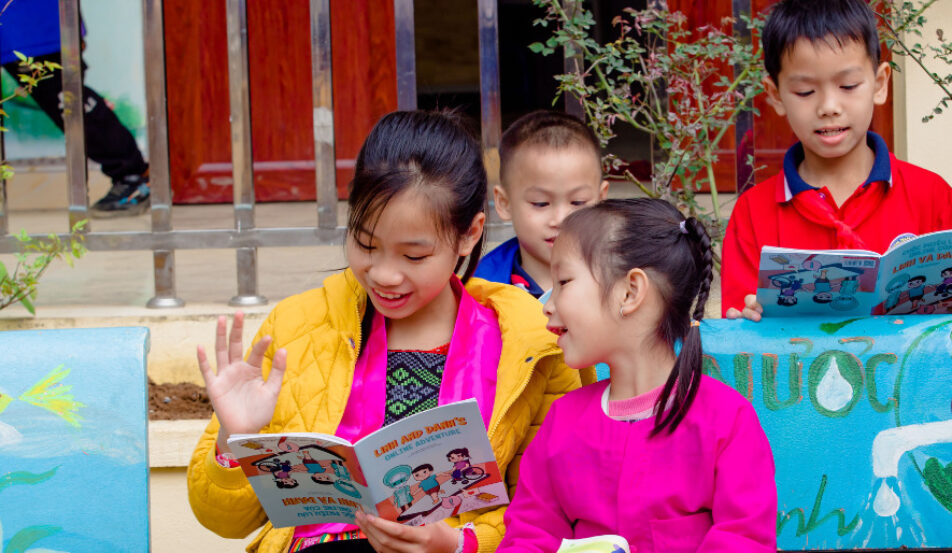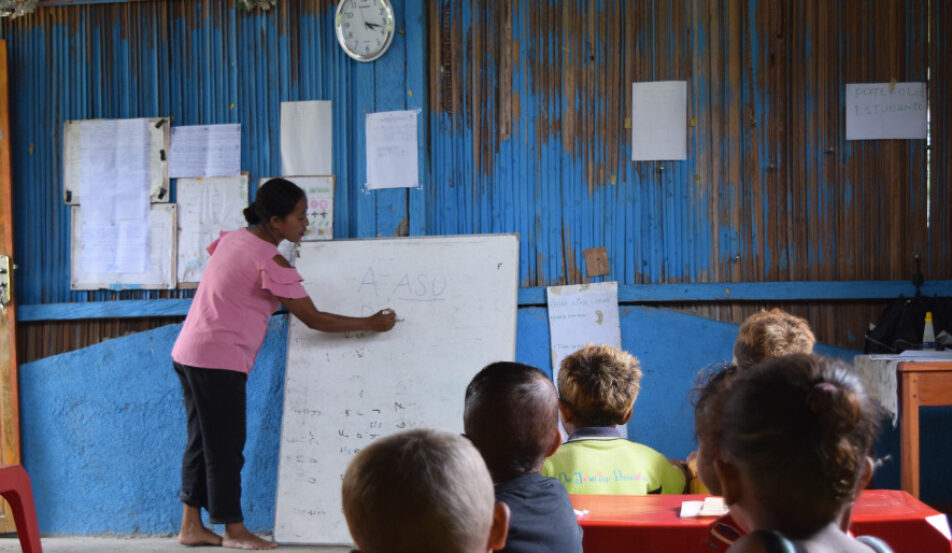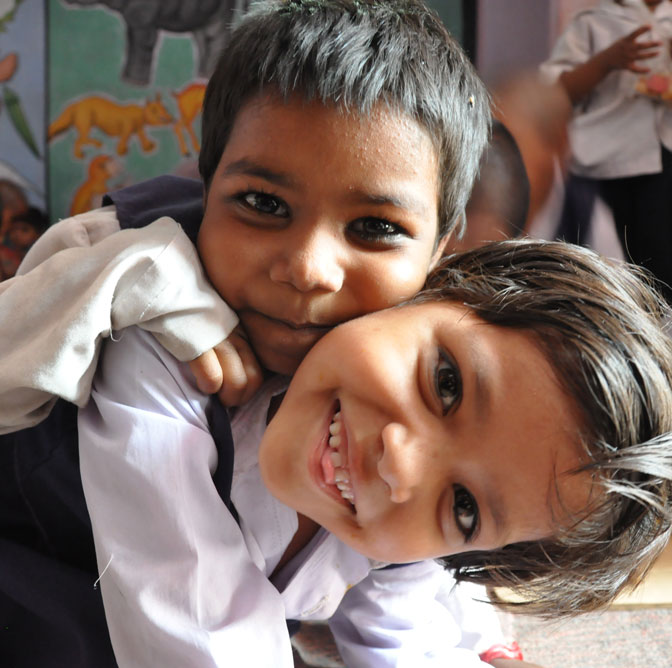Learning to read in India
Pictures often communicate far more efficiently than words, and teachers are discovering that this holds true in the small classrooms of Western India, where children are learning the alphabet and the names of animals, fruits and vegetables through paintings and pictures.
“Earlier, I could not tell the difference between a cabbage and a cauliflower. Now, I know all the fruits and vegetables that we eat,” says 4-year-old Vaishnavi. Vaishnavi is one of the 30 children enrolled in an Early Childhood Development (ECD) centre in the Raigad district of Maharashtra state, India, where ChildFund works in 43 rural villages. “Cauliflower is my favourite vegetable, and it contains many vitamins,” she adds.
Vaishnavi`s best friend, Ashok, is more interested in animals, particularly lions. He uses a story that his teacher told him to explain that the lion is the king of the jungle, “You know, a lion won`t kill other animals if it is not hungry.”
As the program manager of PRIDE India, ChildFund`s local partner organisation in the region, Dr. Virendra Kulkarni believes that young children explore visual art with both a creative and a scientific eye.
“Through art, they not only identify objects and concepts clearly, they also try to explore everything related to them,” he explains. “Wall paintings are one of the best ways to teach children, with the aid of visual expression. Our role is to provide them with materials and inspiration, then to stand back and let them go.”
Shanta Ghatge, a tutor at the ECD centre, agrees: “Wall paintings, posters and other wall decorations not only make the classrooms look great, but they also make learning easy for children and remind them of concepts.”
“We cannot just talk all the time in class,” she explains. “Children need to be stimulated in their learning, and we need such wall paintings, posters and other teaching aids to make their learning interesting”.
Ghatge, who has been an ECD teacher in the area for more than 20 years, says she follows a curriculum adopted by ChildFund which involves the examination of artwork, singing, storytelling, drawing and painting.
“Although the children like almost all the activities, the most popular is definitely creating their own art,” Ghatge says. “I often give out drawing sheets and watercolours and ask them to paint and draw. They just love this activity.”
Research has shown that participating in art, music and storytelling activities helps children develop language, mathematics and social skills. “These essential activities can help the young brain develop to its fullest capacity,” Dr. Kulkarni says. “In all our ECD centres, we use learning methods that are recognized as the best practices for pre-schoolers.”
“One of them is using rhythm to help children develop patterning skills and make relationships between the rhythm, beat and words,” he explains. “There are a lot of local language rhymes that teachers use to improve children`s patterning abilities, while toys and other aids are used to improve their motor skills.”
Ghatge points out that these methods also allow children to have fun in the classroom. “Amidst all this noise, we certainly know one thing: These children are learning while also enjoying their childhoods.”






